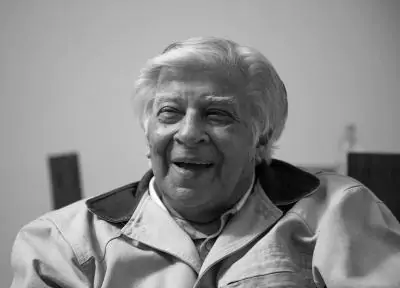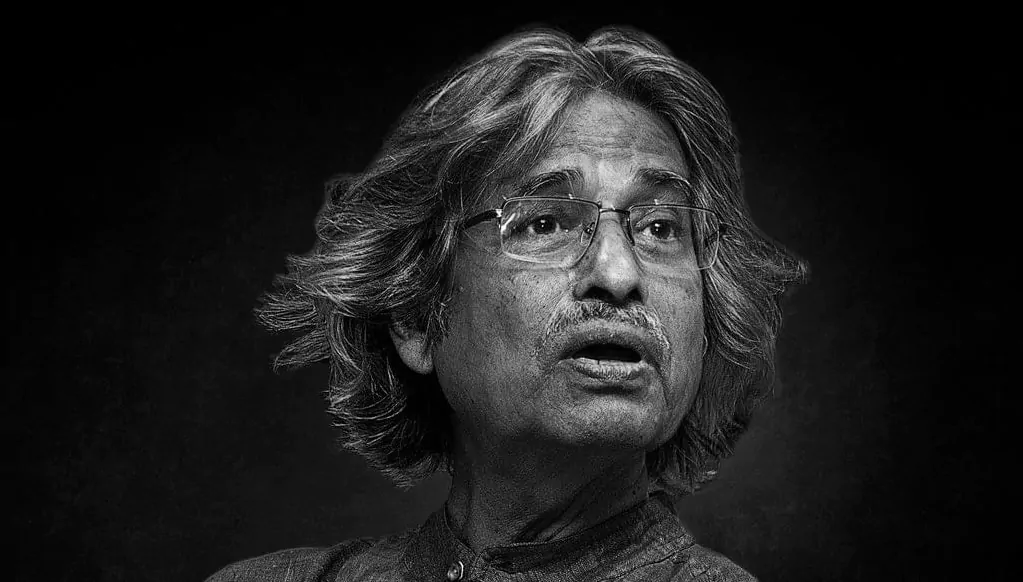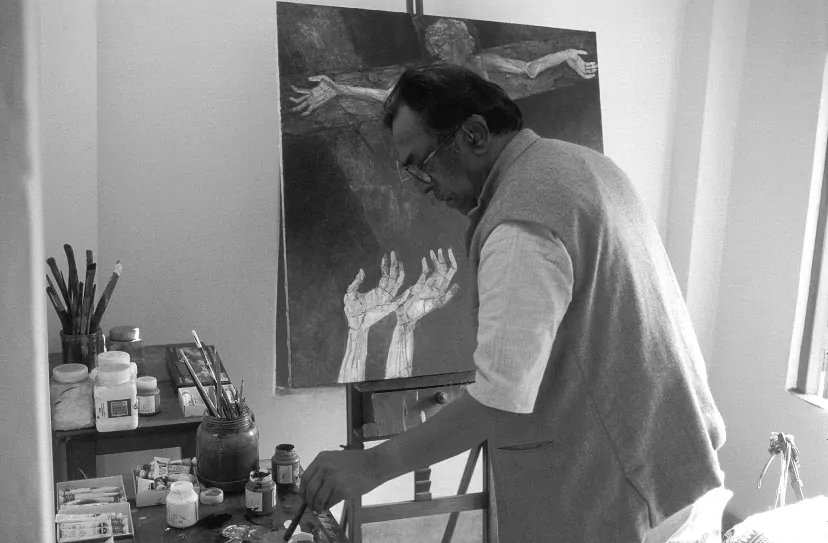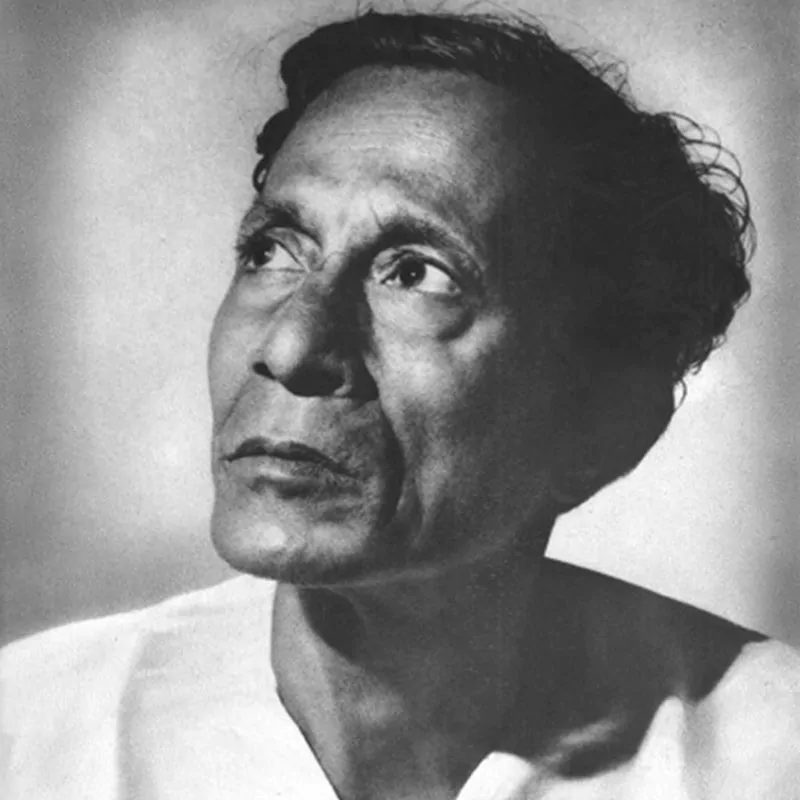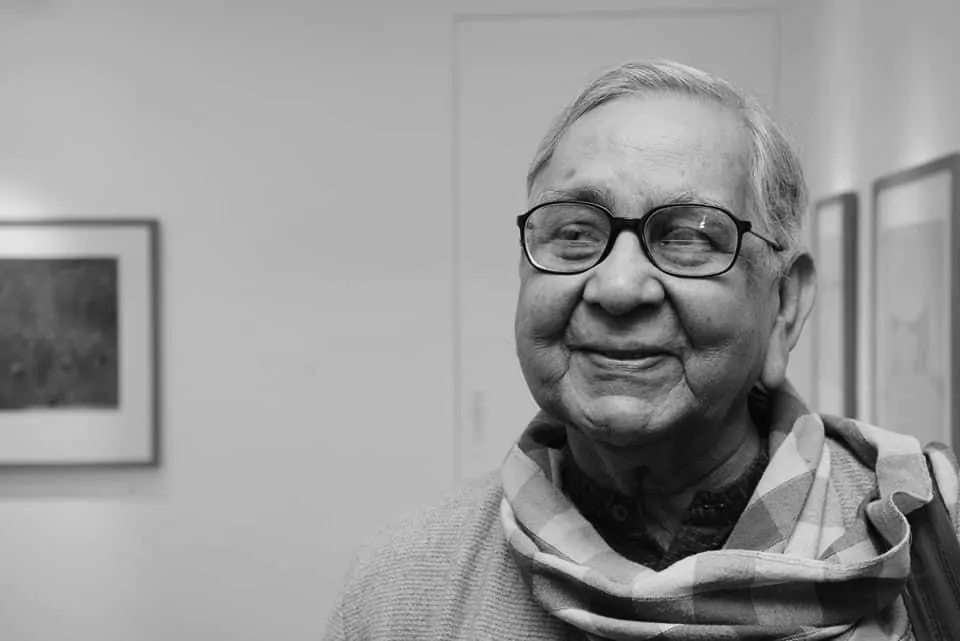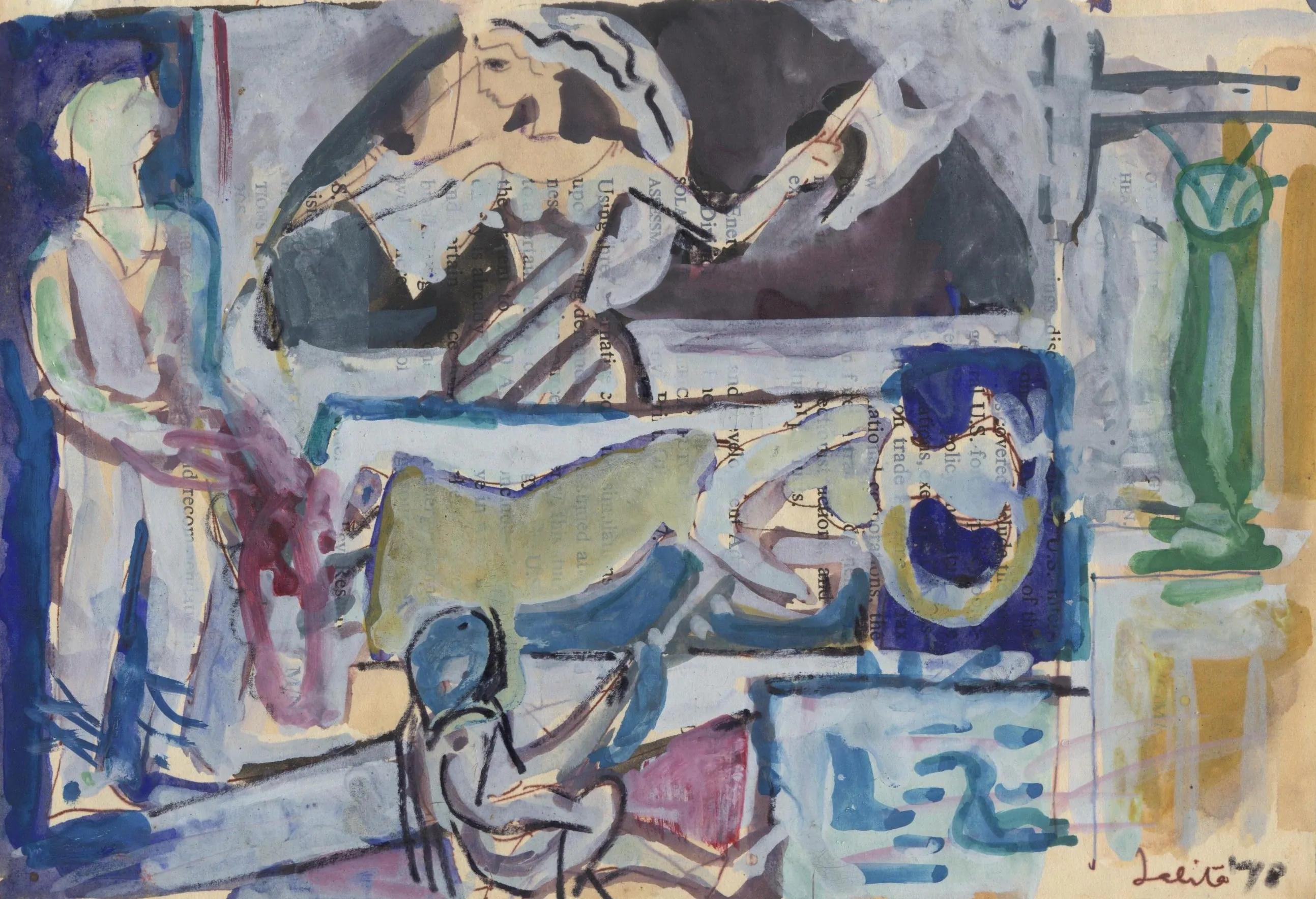Ganesh Pyne: Master of Darkness & Silence.
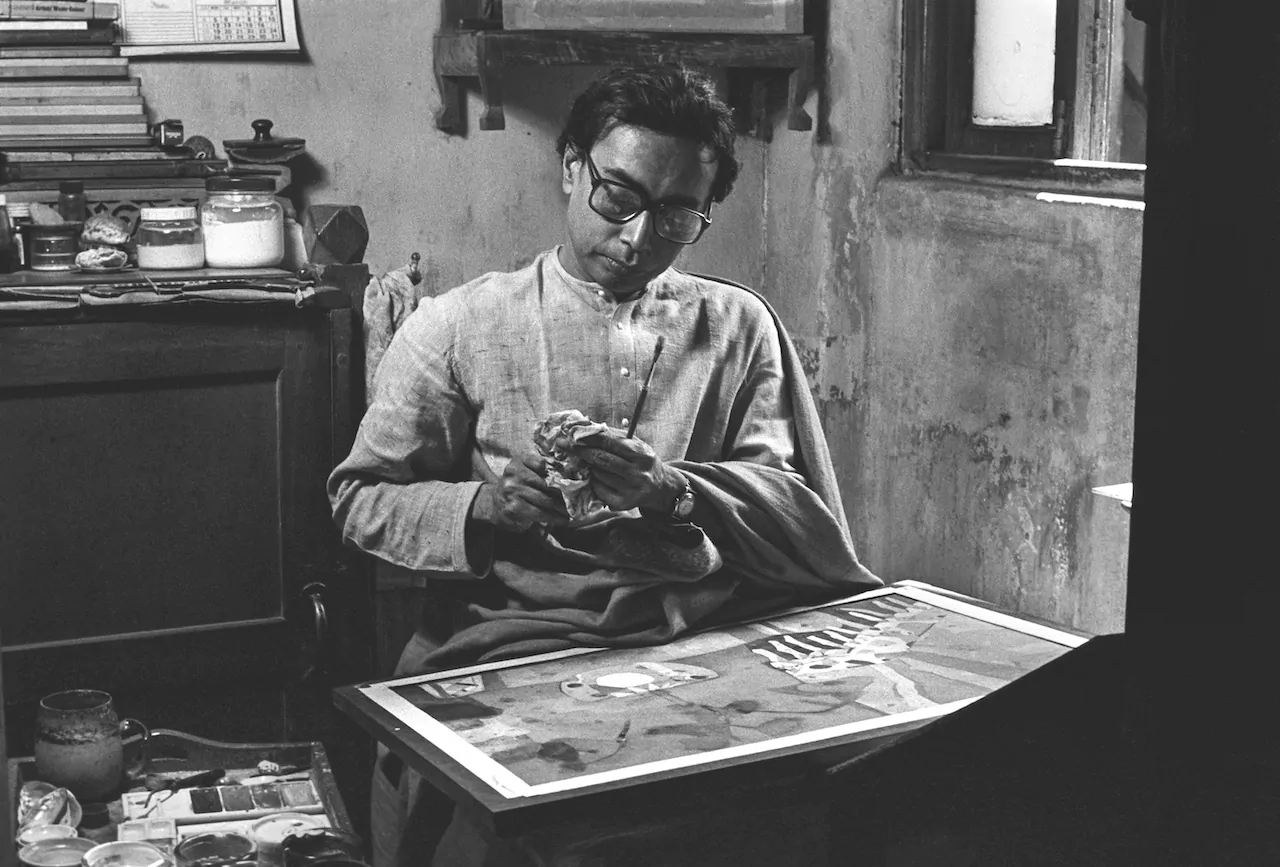
The highly elusive Ganesh Pyne (1937-2013) prized his seclusion to a great extent. Calcutta’s fascination with Pyne also echoes the media’s obsession with probing the enigma of this reclusive artist. His appeal in the city of his birth could spring from a combination of factors. But undoubtedly, there is also the fact that Pyne is one of the most important Indian painters of the century. The dialectic between tradition & modernity that shaped the canvasses of the artists of the earlier generation is resolved in the paintings of Pyne which worked out a brilliant integration between East & West. Ganesh Pyne was a true inheritor of the values of the Bengal School.
His work shows the same fine, precise lines, the same delicate modelling of figures, the same palette, the same delving into literary & mythological sources of the School. This holds particularly true to the paintings done by him in the late 50’s & early 60’s. Pyne is, however, also a true modernist vis a vis the distortions of his figurations; the two dimensional treatment of his pictorial space; the sensibility that he brings to his paintings. One evening as he was about to join the other children at play in the Medical College grounds, the little Ganesh was stopped short on his path by a handcart as it trundled in through the college gates. It was piled high with dead bodies. Right on top was the body of a woman. She was obviously from an upper class background, her silver hair spread loose. Except for a narrow gold chain around her neck, she was completely naked. There as a gash of coagulated blood on her throat. This was Pyne’s first encounter with the indignity of death. He was horrified & instead of joining the other children at play, he slowly retraced his steps backwards to his grandmother. Pyne tried to push the sight of the dead woman into oblivion.
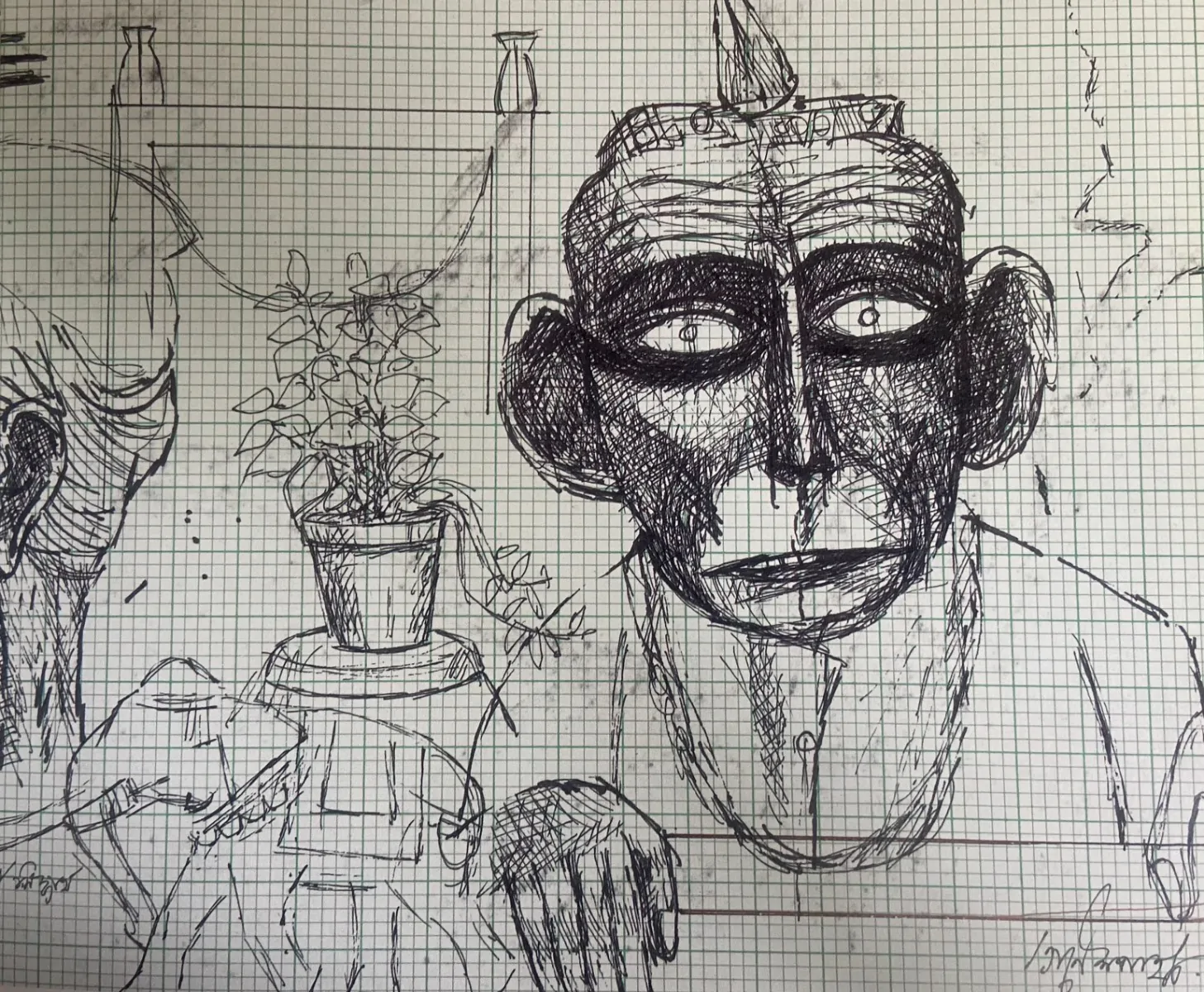
But nearly 30 years later when he painted ‘The Assassin’ did not the terrifying impression resurface? The year was 1946. Calcutta witnessed one of the worst communal tensions of the century. Since the beginning of the decade, Calcutta had become a pressure cooker whose safety valve had got jammed. What Pyne had witnessed that evening in the Medical College grounds was a fallout of the 1946 riots. Pyne, who was born in 1937, was the second of five children. His grandmother Nandarani was the central axis around whom the family revolved. His elder brother Kartik was admired by Ganesh who was his hero. Kartik was everything that he was not-dashing, extroverted, full of fun, a born leader. Ganesh on the other hand was always quiet, shy, introverted. In 1952 when he was 15, he saw a major exhibition of Abanindranath Tagore’s works mounted at the Indian Museum. This was a revelation to him. Seeing his proficiency, Pyne was allowed to join the second year of Art College. Fairly early during his stint at college, he decided that he would chart his own course & not follow the dictates of any school or movement. At the time of his admission, Chintamoni Kar was the principal of the college. Among his teachers Manik Lal Bandyopadhyay was known for doing delicate nature & figure paintings in the Bengal School Style on silk. There was also Satyen Ghoshal & the legendary Gopal Ghosh. Gopal Ghosh, the noted landscape artist who at one time belonged to the Calcutta Group did not teach directly. He would paint in one corner of the class & watching him create a painting was a lesson in itself. But the teacher who had profound influence on him was Deb Kumar Roy Chowdhury. At college, he was fascinated with dramatic lighting. Later in life he acknowledged being affected by Rembrandt’s shadows & the use of the ‘indescribable golden umber’.
After discovering Abanindranath & Rembrandt, there was one seminal moment in his life. Pyne heard Paritosh Sen, who had just arrived from Paris, give a talk with slides on contemporary trends in European Art. The discussion on Paul Klee, along with slides of his paintings left a deep impression on him. Klee’s metaphysical temperament struck a chord with the young artist. Although it became fashionable to go to Paris or London for further studies after finishing training in India & look westwards & emulate & embrace modernism, Pyne stuck to his unique style. While many of the artists were overcoming their worship of the Bengal School & its legacy, daring to be different even intransigent in their approach & embracing abstraction & cubism. There was Somnath Hore & Chittaprosad Bhattacharya who documented the effects of the famine. Shanu Lahiri, Paritosh Sen & Prokash Karmakar who took a more western approach in the manner of the Cubists & Fauvists; Jogen Chowdhury who brought a new vigour to figurative painting while Lalu Prasad Shaw embraced the more difficult style of abstraction.
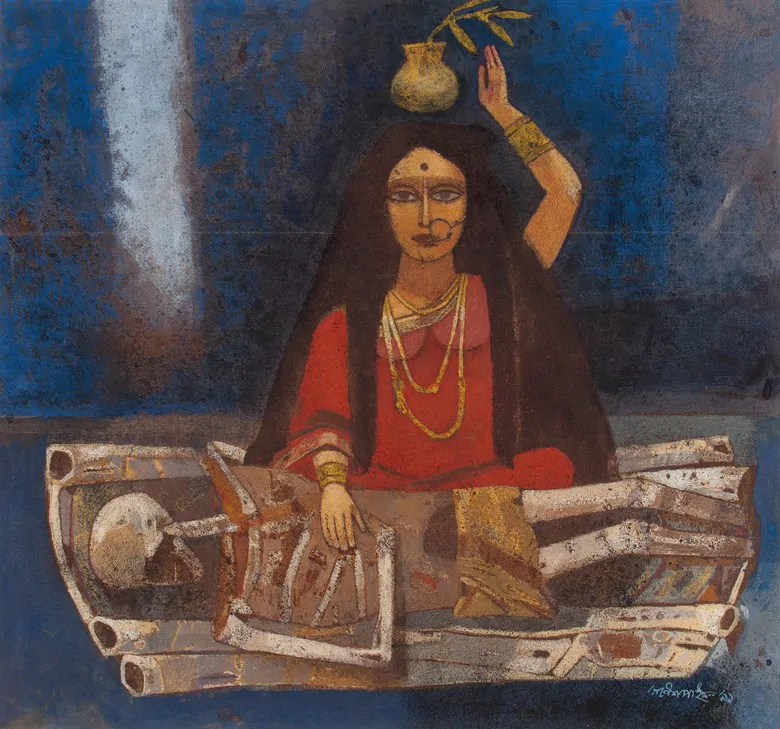
Ganesh Pyne, though shaped by his own cosmopolitan & catholic tastes, drew heavily on his own private mythology created out of the folk tales & fairy stories he heard as a child sitting on his grandmother’s lap. Deeply committed to draughtsmanship & equally at ease with watercolour & gouache, his true mastery was expressed in tempera-a technique & medium he made his own. Throughout his career & during his later years, he would keep revisiting scenes & characters from history, literature, cinema & the epics. Faces crumbling in pain or lament, eyes stricken with fear or lusty with vengeance: these images were keenly resonant of the upheavals that accompanied the political rule in Bengal when he lived. A great admirer of films especially of Ingmar Bergman & Federico Fellini, Pyne created a vocabulary that was serene, tender & yet unsparingly honest at the same time. What gives Pyne’s work a distinctiveness is the artist’s involvement with his art all his life. His life, his world, indeed his whole being was focused on this act of creation. He was most at home with his own inner world of darkness & light from which emerged a strange form. His paintings were a reflection of this all-absorbing interior life.
-Vinayak Pasricha.




